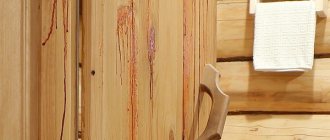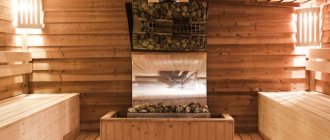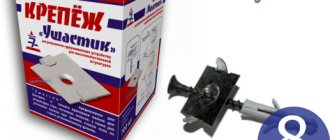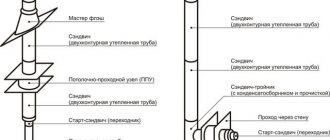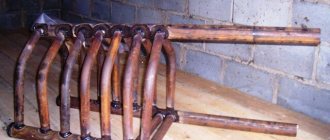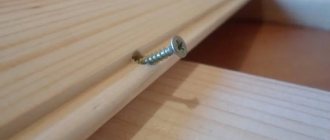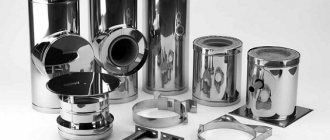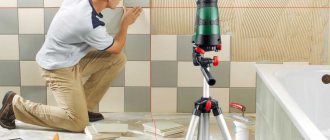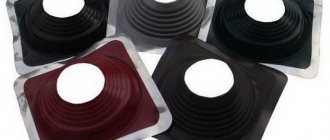Foam blocks. Typical sizes and their application in construction.
- Types of produced overall dimensions of foam blocks.
- Optimal foam block sizes for load-bearing walls.
- Foam block for internal partitions.
- Permissible discrepancies in the dimensions of the foam block.
- How to calculate the amount of foam block needed for construction.
- Conclusion.
Types of produced overall dimensions of foam blocks.
In the production of foam blocks, various overall dimensions are used.
The sizes have a standard step of 50 or 100 mm.
Typical block dimensions in width (mm) 50 / 100 / 150 / 200 / 250 / 300 / 400
The blocks have three standard heights (mm) 200, 250 and 300
The length of the foam block has a constant standard size (mm) of 600, less often 625mm
The most popular foam block sizes in construction:
100x300x600 / 200x300x600 / 250x300x600 / 400x300x600
The size range of produced foam blocks is determined by the standard standard sizes used by architects when designing residential and non-residential premises.
In determining the size of the width (wall thickness), a large role is played by the thermal conductivity qualities of the material and its use in a particular climatic zone. Thus, in a warm climate, a wall block thickness of 200 mm is used, in an average (temperate) climate the wall thickness is 300 mm, for a climate with sharp temperature fluctuations over several seasons, a block size of 400 mm is used.
In Russia, the standard foam block thickness used for the walls of a residential building is 300 mm with insulation (cladding) or 400 mm without insulation (under plaster). For the walls of utility unheated premises, foam blocks with a width of 200 and 300 mm are used.
How to choose a suitable foam block
First of all, you need to decide what size blocks you need. If the masonry is carried out independently, then large-format blocks will not be suitable, because 1-2 people cannot handle them.
For example, when I built a house from foam blocks, there was no need to use a block larger than 20*30*60 cm.
In answer to the question “which foam blocks are best to build a house from” it is difficult to give a definite answer. The thing is that the usual M marking is not used in relation to this material. Unlike brick, for example, the brand of foam block does not indicate its strength, but its density.
That is, looking at the number after the letter M in the brand of brick, you can understand how many kg per unit area it can withstand. In foam concrete, markings are carried out with numbers from 400 to 1200 after the letter D.
The figure tells you how many kilograms a cubic meter of brick weighs
Pay close attention to the photo below. The price, as you understand, will increase in proportion to the increase in brand
If you take this point into account in your foam block house project, you will save yourself from unnecessary hassle, and you will not have to invest in subsequent repairs.
As you understand, it is impossible to say which foam blocks are better in principle. It is necessary to understand that each has its own use and use it correctly.
Optimal foam block sizes for load-bearing walls.
For Russia, the most popular sizes of wall foam blocks are 200x300x600 and 400x300x600.
The most popular of them, the size 200x300x600, is used universally for walls with a thickness of 200 and 300 (mm) both for external walls and for indoor partitions. Residential and commercial buildings are built from it. Two sides of the block are used in width and height; depending on the required wall thickness, these parameters can vary with each other. This block is used in construction (according to thermal conductivity standards) together with a layer of insulation.
The second widely used size 400x300x600 is used only for the construction of external walls of a building, while the outside of the wall may not be insulated, but only finished with a layer of plaster.
Density
It is clear that the denser the foam concrete, the more load it can withstand. Here is a table with all the indicators:
| Density grade | Strength, kg/cm2 | Thermal conductivity, W/m×K |
| D300 | Not installed | 0,08 |
| D350 | 7 | 0,09 |
| D400 | 9 | 0,10 |
| D500 | 13 | 0,12 |
| D600 | 16 | 0,14 |
| D700 | 24 | 0,18 |
| D800 | 27 | 0,21 |
| D900 | 35 | 0,24 |
| D1000 | 50 | 0,29 |
| D1100 | 64 | 0,34 |
| D1200 | 90 | 0,38 |
As strength increases, thermal insulation properties decrease. This is due to the fact that the “soft” block has more bubbles - cavities filled with air.
Building materials can be grouped as follows:
- Thermal insulation . Suitable for reducing heat loss, internal partitions: D300 , D350 , D400 , D500 .
- Structural and thermal insulation . Used in the construction of houses. Will withstand 1-2 floors: D500 , D600 , D700 , D800 , D900 .
- Structural . Used in the construction of military and industrial facilities: D1000 , D1100 , D1200 .
The weight of 1 m3 D400 brand blocks is approximately 400 kg. This correspondence is useful for quickly calculating the mass of foam concrete, for example, for transportation.
Now we present a table of the relationship between two important parameters:
| Brand by density | Compressive strength class | |||
| D500 | B3.5 | B2.5 | B2 | B1.5 |
| D600 | B5 | B3.5 | B2.5 | B2 |
| D700 | B5 | B3.5 | B2.5 | B2 |
| D800 | B7.5 | B5 | B3.5 | B2.5 |
| D900 | B7.5 | B5 | B3.5 | B2.5 |
| D1000 | B7.5 | B5 | — | — |
| D1100 | B10 | B7.5 | — | — |
| D1200 | B12.5 | B10 | — | — |
The higher the compressive strength class, the more reliable and stronger the finished structure.
Permissible discrepancies in the dimensions of the foam block.
When producing foam blocks, the parameters for the size and plane of the block must be strictly maintained. The maximum permissible error in size according to existing GOST rules can be no more than 5 mm. If the foam block has deviations from the declared dimensions by more than 5 mm, then this is a defect. When using such foam blocks when laying, you cannot use adhesives, but only a thick mixture of cement mortar, which leads to additional construction costs.
Foam blocks with broken geometry are subject to recycling or are sold with a reduced grade and a discount.
Foam concrete and aerated concrete - do not confuse
There are two porous building materials of artificial origin on the market - aerated concrete and foam concrete. Their composition is similar. This is a mixture of cement and sand with the addition of water and a foaming agent. As a result, the mixture acquires a porous structure, which increases thermal conductivity and reduces weight. These are the main advantages of materials of this type.
But not everyone understands the difference between foam concrete and aerated concrete. This is not surprising: they are very similar in appearance, they even have the same GOST. The difference is mainly in the features of the technology. The characteristics of both materials are very similar and they belong to the same group - cellular concrete.
Foam blocks and gas blocks are visually not too different
What is the difference
The difference between foam and aerated concrete is the foaming agent used and the order of its addition.
- When making aerated concrete, aluminum powder is added to the dry mixture of cement and sand, and everything is thoroughly mixed. Then water is added. As a result of the reaction (aluminum powder with cement components) hydrogen and aluminum oxides are formed. Hydrogen “carbonates” the mixture, resulting in the formation of cells of different sizes - there are large ones - 3 mm or more, and small ones - 1 mm or less. At a low level of production, a non-uniform structure of the block in height is possible. Such heterogeneity is reflected in thermal conductivity and sound insulation characteristics. Aerated concrete of normal quality has a more or less uniform structure and stable characteristics. So when choosing this material, the level of production is of great importance.
Technology for the production of gas blocks - A chemical or organic foaming agent is added to foam concrete in the form of finished foam. First, the dry components are mixed, water is added to them, foam is introduced into the evenly mixed solution, which gives pores of approximately the same size. That is, foam blocks are more homogeneous in structure (pictured on the left). In addition, the bubble shell is thicker and more durable.
Foam block production technology
If we consider materials from this side, then foam blocks have more advantages. But there are other nuances that also need to be taken into account.
Production Features
When choosing building materials, especially such as cellular concrete, you need to pay attention to even the smallest details. Because they are the ones who ultimately influence how warm and durable the structure will be. We will describe these subtleties in this section.
- Production technology.
- Making foam concrete is so simple that it can be done in the garage. It is enough to buy a foaming agent, and the remaining components are easily available. The mixture (cement+sand+water) is mixed in any container, a foaming additive is added. Next, the composition is poured into molds. The ripening of the blocks occurs under natural conditions - in the air. That is, you can do without special equipment, quality control is conditional - you need to adhere to known proportions and technology. But you really want to save money... That’s why there are a large number of foam blocks on the market, the quality of which is far from GOST standards.
Foam concrete has a more uniform structure
Aerated concrete is just as easy to mix, but there are two types - autoclaved and non-autoclaved. Non-autoclave also dries in the open air, but does not have the best characteristics. Autoclaved aerated concrete undergoes a hardening process at elevated pressure and temperature. As a result, the blocks are of increased strength. They cost more, but are also much stronger.
- Making foam concrete is so simple that it can be done in the garage. It is enough to buy a foaming agent, and the remaining components are easily available. The mixture (cement+sand+water) is mixed in any container, a foaming additive is added. Next, the composition is poured into molds. The ripening of the blocks occurs under natural conditions - in the air. That is, you can do without special equipment, quality control is conditional - you need to adhere to known proportions and technology. But you really want to save money... That’s why there are a large number of foam blocks on the market, the quality of which is far from GOST standards.
- Accuracy of geometric dimensions.
- Aerated concrete blocks are produced in two ways. According to one technology, the composition is poured into ready-made molds. These blocks have a difference in size of up to 3-5 mm. Using another technology, large-format blocks are formed, which are then cut to specified sizes. The difference in size of such material is minimal.
Strength of foam concrete of different densities
Foam concrete is poured into ready-made forms. There is no other technology. Accordingly, the difference in block geometry can be significant. It is corrected by increasing the masonry seam, which reduces the thermal insulation characteristics of the masonry as a whole. So when choosing, focus on geometry. If the blocks are almost identical (GOST allows deviations of 1 mm), there is hope that the technology was followed.
- Aerated concrete blocks are produced in two ways. According to one technology, the composition is poured into ready-made molds. These blocks have a difference in size of up to 3-5 mm. Using another technology, large-format blocks are formed, which are then cut to specified sizes. The difference in size of such material is minimal.
If we consider these materials from this point of view, then autoclaved aerated concrete with minimal differences in dimensions is more preferable. Masonry from this material is made using special glue. It is applied in a layer of a couple of millimeters, since the ideal geometry allows this to be done. Since the seam on a wall made of this material is a bridge of cold, the wall turns out to be very warm (due to the small thickness of the seam, heat is better retained in the building).
When using foam blocks with a large discrepancy in size, a regular mortar is used for masonry. The glue is too expensive to apply in large layers. When using cement mortar, the costs are much lower, but the thermal insulation characteristics of the building cannot be compared - they are much lower.
About foam concrete blocks
Foam concrete blocks are a popular building material; they belong to the class of cellular concrete due to the specifics of production. For their manufacture, a standard cement-sand mixture with water is used (as for concrete), but with the addition of foaming agents. This allows you to reduce the amount of cement by 2–4 times.
The following can act as foaming agents:
- synthetic compounds (not recommended for the production of blocks for the construction of residential buildings, due to the toxicity of synthetic foaming agents, and the strength of products with them is lower);
- protein – organic – additives (environmentally friendly, provide good strength and are inexpensive).
To increase the strength of the material, construction micro-reinforcing fiber or fly ash (dry/fly ash) can be added to its composition. All components are mixed under pressure, foaming occurs at the very end of the process, after which the mixture is poured into molds (large and small). Large foam concrete pieces are subsequently cut, achieving a more precise geometry compared to piece molding in separate containers.
The main characteristics (including what sizes foam blocks are) are determined by GOST 25485–89, GOST 21520–89 and GOST 5742–76. Based on these standards, it is easy to calculate how many products will be needed to build a future bathhouse, for example, or a garage.
It is important. Cement binders are used in the formulations of foam concrete blocks, because their (blocks) strength is not formed immediately and continues to increase over the years (already in the structure of the building). As the examination shows, the strength of foam concrete after 30–40 years can exceed its original value by 4 times.
What does it consist of?
The first “airy” concrete was made by A. Erikson, an architect originally from Sweden. The patent for the invention was received in 1924 . Since then, the technology has remained virtually unchanged, and foam concrete has spread throughout the globe.
The base of the block consists of 5 components:
In order for air bubbles to appear in the mixture, special foaming additives are added to it:
Natural . Protein based. Environmentally friendly.
Artificial* . Toxic synthetics.
The foaming agent belongs to 4 . Residential buildings should not be built from such blocks. Maximum - premises for utility purposes.
After the formation of bubbles, the finished composition is poured into molds or left in the form of a large monolith. Drying begins. Drying time in a natural environment is 28 days. To speed up the process, an autoclave is used - a pressure chamber with an internal supply of hot steam.
Afterwards, the concrete is taken out of the molds, and the monolith is sawed into blocks. In the latter case, the geometry of the finished product is almost ideal.
